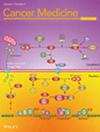Disaggregation of Hepatobiliary Cancer Mortality Among Asian Americans: Analysis of NVSS Mortality Data
Abstract
Background
Asian Americans (AAs) are a diverse population, and aggregation of AA health data in national reports conceals significant differences between AA subgroups. As hepatobiliary cancer rates increase globally, a greater understanding of hepatobiliary mortality among AA subgroups could motivate precision intervention and screening programs.
Methods
Using national mortality data from 2005 to 2020, we report age-adjusted mortality rates, standardized mortality ratios, and annual percent change for hepatocellular carcinoma (HCC), nonspecified liver cancer (NOS), intrahepatic cholangiocarcinoma (ICC), extrahepatic cholangiocarcinoma (ECC), and gallbladder cancer (GBC) using national mortality data for the six largest AA subgroups (Asian Indian, Chinese, Filipino, Japanese, Korean, and Vietnamese) compared to non-Hispanic White people (NHW).
Results
All AA subgroups (except Asian Indians) had significantly higher hepatobiliary cancer mortality than NHW people. Vietnamese people demonstrated the highest mortality from HCC (7.65 per 100,000) and nonspecified liver cancer (5.57 per 100,000), while Korean people had the highest mortality from the biliary tract cancers: ICC (3.10 per 100,000), GBC (0.72 per 100,000), and ECC (0.97 per 100,000). Notably, ICC mortality increased across the study period. Across all subgroups, male individuals had significantly higher hepatobiliary cancer mortality than female individuals, with differences being largest for HCC and nonspecified liver cancer.
Conclusions
Differences in mortality across hepatobiliary cancer types demonstrate the importance of analyzing subtypes separately. These differences also highlight the importance of developing ethnically targeted screening, prevention strategies, and treatment.


 求助内容:
求助内容: 应助结果提醒方式:
应助结果提醒方式:


